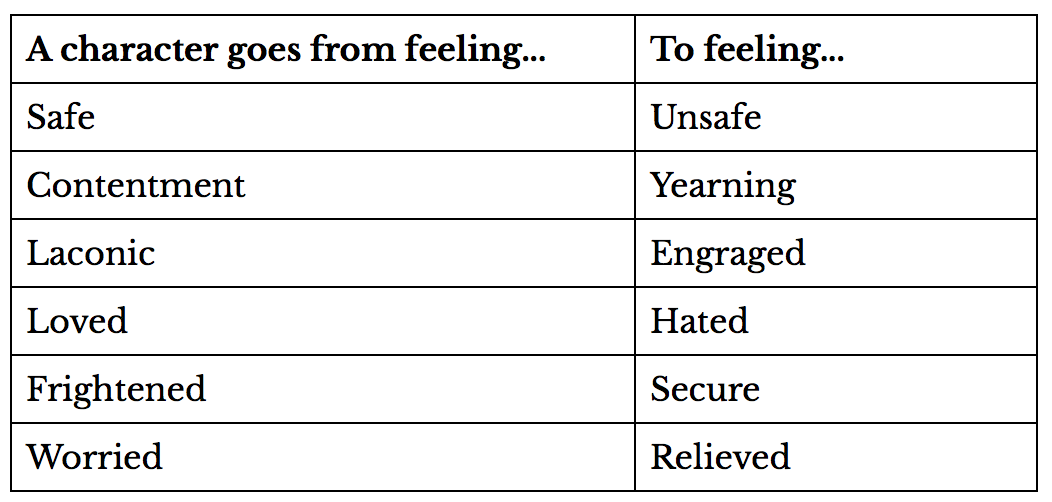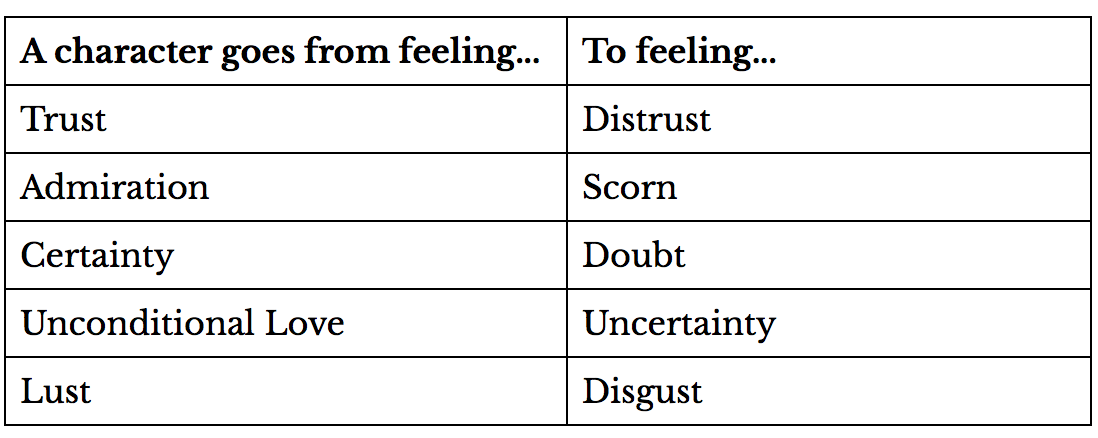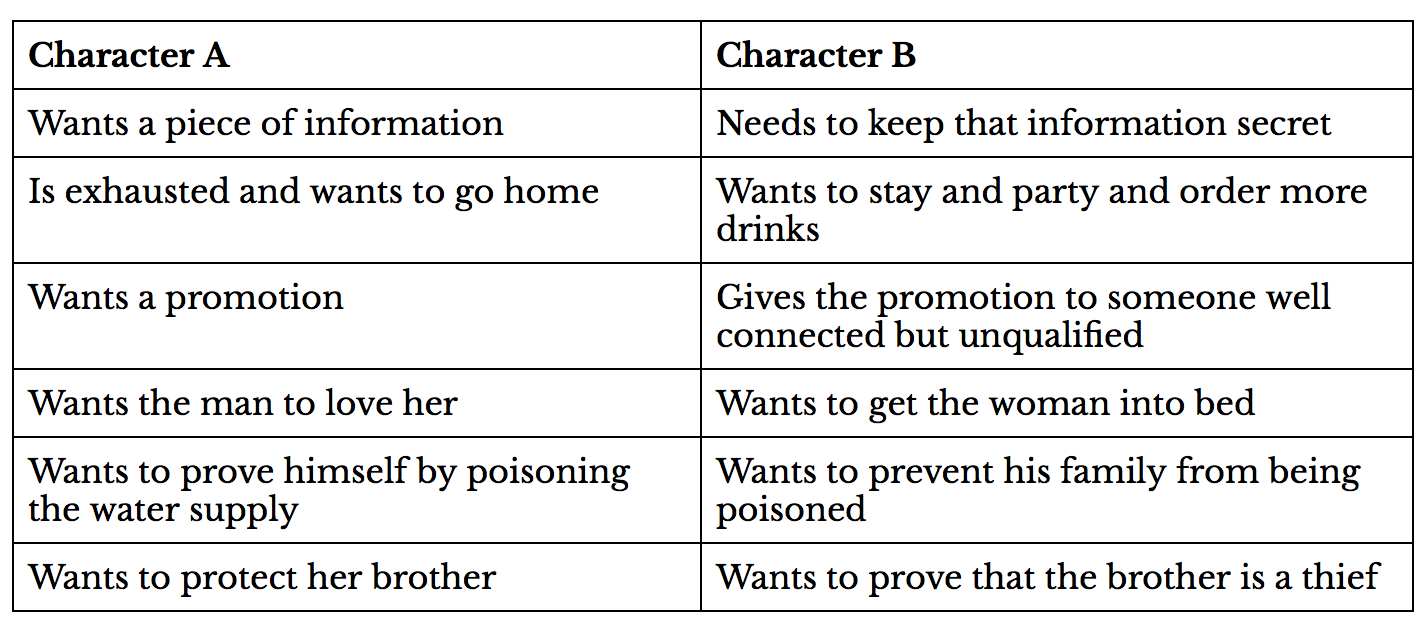
Part ii. Setting the Scene
Every scene, from the opening of your novel to the final scene at the end, should move your story forward. Scenes may contain character introductions, descriptions of setting, dialogue, and action. In some scenes, characters reflect on what just happened or remember events that transpired far in the past. But fundamentally, each scene in your novel should result in some kind of change that pushes your story forward.
To get technical, a scene is an action that takes place at a particular time in a particular setting. A scene is bound in time and place, though characters can enter and exit.
Set the Scene
It's important to give careful thought to the point, in the ongoing action, when you want to start writing a scene.
"The Everything Guide to Writing Your First Novel" author, Hallie Ephron, offers a good rule of thumb: Start as late as possible. Basically, start the scene when things begin to happen. Often writers do this by jumping right into the middle of some ongoing action.
To set the scene, you need to think of the following:
• When and where does the scene take place?
• Which characters are in the scene?
• How does the scene open?
• What is the main thing that happens/changes?
The Essential Change in a Scene
Throughout each scene, some change should occur to move your story forward. It's not enough for a scene to just introduce a character or convey lots of interesting information about the setting. In every scene, something has to change. This means that something has to happen that changes the situation.
The change might be a big change caused by some external cataclysmic event like a bomb or zombie apocalypse, or it can be a subtle change caused by a small event like the discovery of a disturbing letter or the realization that a loved one is behaving oddly.
Kinds of Changes
The change that occurs in a scene can be a change in a character's emotional state, or a change in a relationship among the characters, or a change in a situation.
Changes in Emotional State

A scene can also contain a change in the relationship between two characters.
Changes in Relationship Between Characters

The change can also be situational. Take Hallie Ephron's examples of events that can radically change the situation for a character:
• He meets the "woman of his dreams."
• His apartment is burgled.
• He loses his wedding ring.
• His dog disappears.
• His wife leaves him.
• He has a premonition of his death.
• He finds out that his best friend betrayed him.
• He discovers that his e-mail account has been hacked.
• He is stranded when his car breaks down on a dark road in the middle of nowhere.
(Wow, this guy's life really sucks!)
If a scene doesn't have some kind of fundamental change in it, then the scene is dramatically unproductive. Consider deleting it and incorporating any bits that you need into another scene that's working for you dramatically. Whatever parts you delete, be sure to paste them into a spare document for safe keeping in case you later decide you need them back.
Conflict in a Scene
Conflict is what makes what's going on in the scene more interesting. Conflict allows your characters to show who they are. Every scene in your novel should have at least some conflict in it; the degree of conflict is up to you.
Sources of Conflict
Conflict happens when one of the characters meets an obstacle to getting something she wants. The following table shows examples of conflicts between characters.

Conflict can be internal, as when one character seems to shut down and refuse to connect with another, or pretends that everything is fine when in reality it isn't.
Or conflict can be external, as when two characters disagree or argue or engage in a chase or a physical fight.
A scene is always more interesting and allows your characters to show who they are if you layer in some conflict.
Conflict Throws Characters Off Balance
Even the most subtle of conflicts has the effect of throwing a character out of equilibrium. Move a character out of her comfort zone and you have something interesting going on.
In every scene that you write, there should be some source of conflict. It can be between characters, between a character and the elements, or even within a character. Find that source of conflict and heighten it, and the scene will become more interesting.
Complete the Scene
Where to end a scene is also an important choice. Hallie Ephron's other good rule of thumb: End as early as possible. Basically, don't let the scene dribble off, end it at a strong moment and leave out any unnecessary final bits.
Scenes end when the time or setting changes, or when the narrator changes.
Scene Checklist
After you write each scene, there are questions you can ask yourself to determine whether the scene is strong enough to stand on its own in your novel.
• Did you establish when, where, and who near the start of the scene?
• When you introduced new characters or new settings, did you take enough time to describe them without overdoing it?
• Have you made it clear to the reader what these characters want?
• Does something change in the scene—emotional balance, character relationships, or situation?
• Is there some conflict?
• Did you start the scene as late as possible?
• Did you end the scene as early as possible?
Tighten Each Scene
Read each scene through and assess whether it delivers everything that a scene should. A flabby beginning should be tightened. If it starts too early, cut to where things get interesting. Floating characters need to be anchored in time and place. An ending that dribbles off should be trimmed. If there's no conflict in the scene, look for opportunities to insert some.
And most of all, make sure that your novel needs every single scene that's in it. If you can cut a scene and the story won't suffer, cut it!
Focus on the following:
• Strong start - Does it engage the reader right away; are you starting it as late as possible?
• Clear orientation - Is it clear to the reader, within a paragraph or two, where and when the scene takes place and who is there?
• Conflict - Every scene should have some tension or conflict; at least one character should feel off balance.
• Arc - From beginning to end, something should change in the course of each scene, even if it's nothing more than a character's emotional state.
• Strong finish - Does it end strong and as early as possible, or does it just dribble off?
Please remember to vote if this part has helped you in any way!
Bạn đang đọc truyện trên: Truyen247.Pro